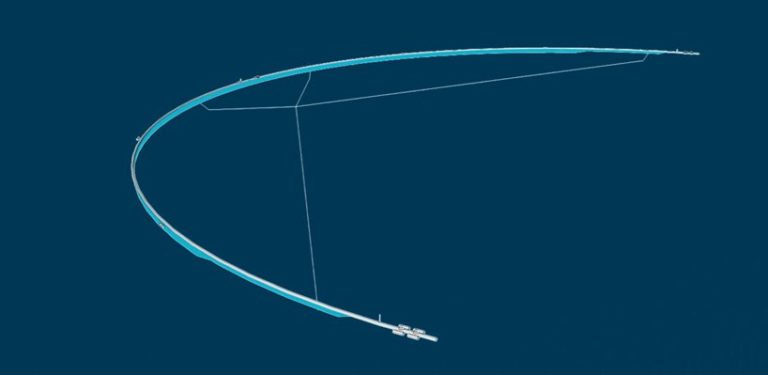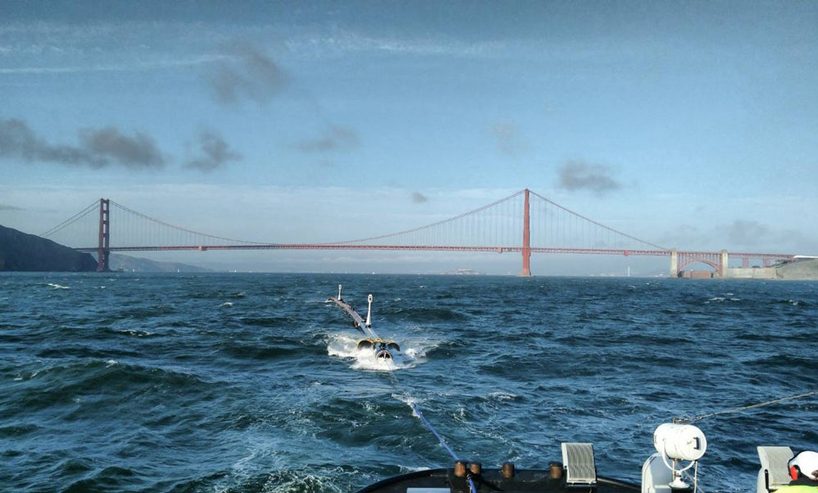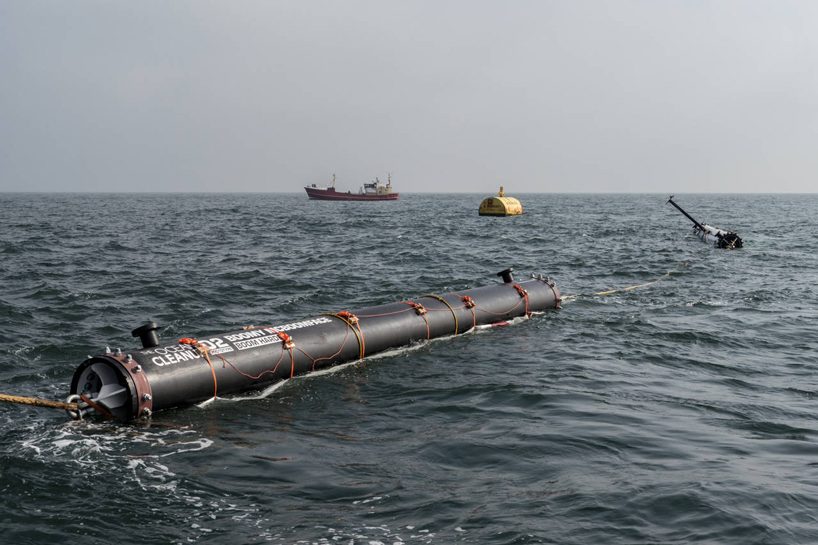

Ocean cleanup project has radically redesigned their trash collecting system, in favour for a pac-man styled system, after tests of their original system found it moved too much due to waves. since their conception around five years ago, ocean cleanup has continuously developed its’ solutions to the plastic waste issue consuming our oceans.
the giant ‘pac-man’ system consists of a 600-meter-long floating tube that sits at the surface of the water, with a tapered 3-meter-deep skirt attached below to catch plastic waste. earlier prototypes included anchors that would hang at a depth of 2.5 miles to slow down the system, creating a difference in speed between the system and the plastic, allowing for the plastic to accumulate along the cleanup barrier at the surface. ocean cleanup researchers soon realised this was not enough to slow the u-shaped barriers down enough to catch the plastic and so anchors in the most recent design have been dropped fully.

‘when the direction of the wind and waves change, this creates an imbalance with the system; and the part of the system with the highest drag is no longer in the far back of the system,‘ it explains on the project’s website. ‘nature doesn’t like being out of balance, so it will automatically correct this. the sides of the system (which, remember, have the least amount of water drag) will then overtake the center of the system that has the highest amount of drag. the result: the system automatically stabilizes itself, and will always directly face the direction it is traveling in.’

the plan is that plastic waste collected by the system will be hauled away by a vessel every few months, and taken to land to be recycled. the final version of their trash-collecting barriers will be towed out to the great pacific garbage patch later this year. accumulated in this area are 1.8 trillion pieces of plastic, weighing 80.000 metric tons.

‘although there is a fair chance this won’t be the last iteration of our ocean cleanup technology,’ the project says. ‘we have high confidence that it addresses the stability issues and that this will be the design responsible for collecting the first plastic from the great pacific garbage patch later this year.‘